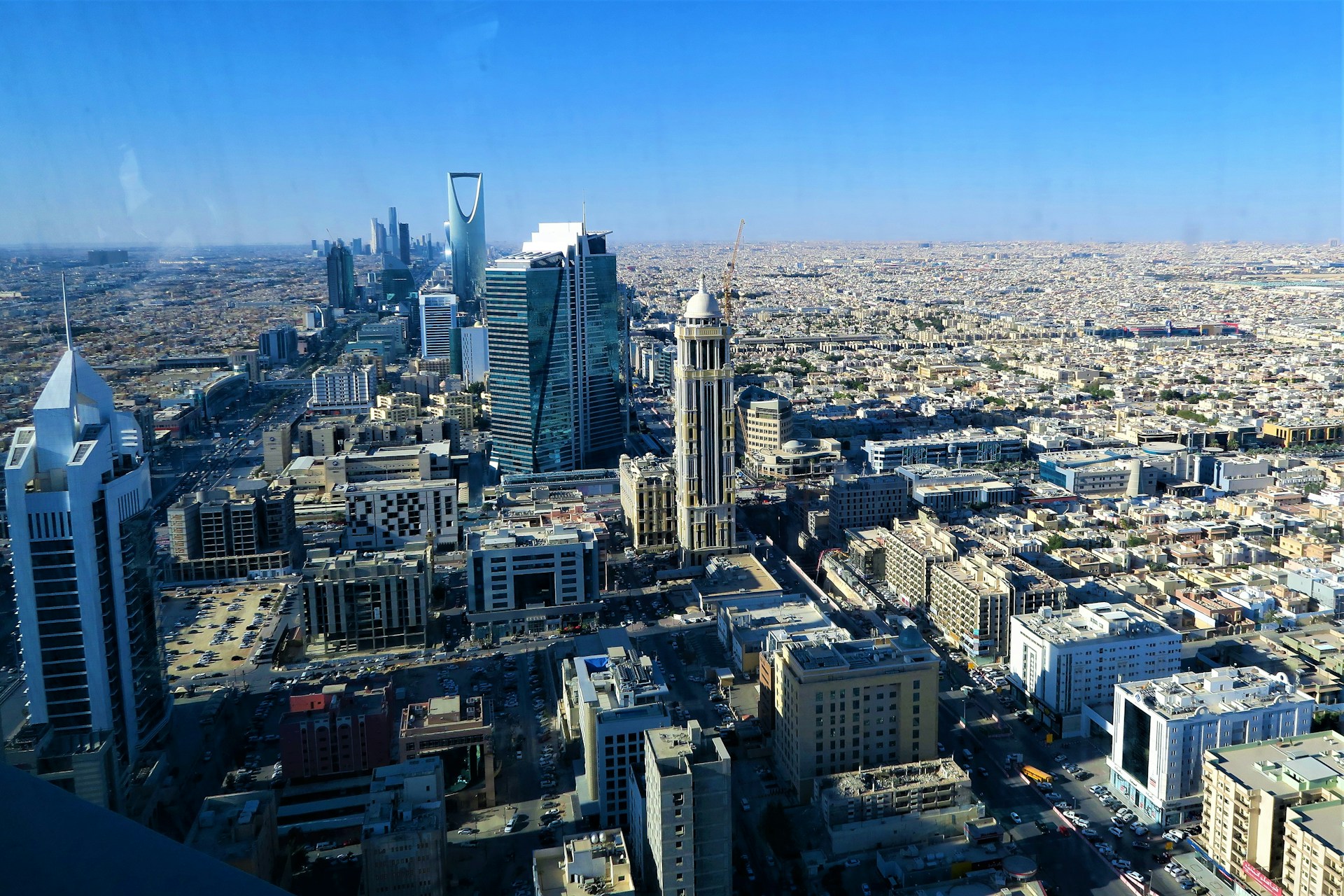The Kingdom of Saudi Arabia is revealing a string of modern stadiums that combine innovative architecture with cultural relevance in anticipation of hosting the 2034 FIFA World Cup. The five cities of Riyadh, Jeddah, Al Khobar, Abha, and NEOM will host the fifteen venues that will make up the tournament. Each one is a reflection of the country’s determination to provide an unforgettable sporting experience and make a lasting impression.
Riyadh: The Sporting Wonders of the Capital
King Salman International Stadium
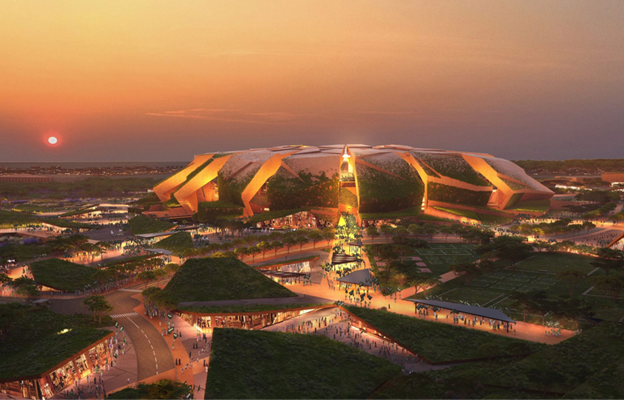
This Riyadh stadium, with its 92,760 seats, is going to be the showpiece of Saudi Arabia’s World Cup infrastructure. Its architecture, by the world-renowned Populous, blends in with the surrounding environment, making use of natural shading and ventilation. It will play host to the first match and the championship when it opens in 2029.
King Fahd Sports City Stadium

This iconic stadium will be refurbished and enlarged to accommodate 70,200 spectators. The design, which draws inspiration from Bedouin tents, will be updated to meet FIFA standards while preserving its essence.
New Murabba Stadium

Inspired by the layered bark of native acacia trees, this 46,000-seat stadium is part of Riyadh’s pioneering New Murabba stadiums urban development. Its exterior features textured, angular forms and illuminated entrances. The stadium is designed for adaptability, equipped with immersive technology and features that prioritize the needs of fans. After hosting World Cup group and knockout matches, it will transform into a multi-use arena for public gatherings, concerts, and gaming events. This building embodies the vision of Saudi Arabia, which is to combine urban vitality with architectural artistry.
Prince Mohammed bin Salman Stadium
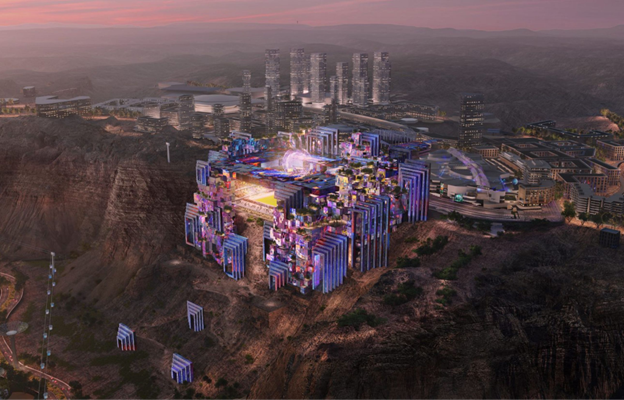
This one-of-a-kind cliff-top venue, situated atop picturesque Tuwaiq Mountain, will have a retractable roof and a planned capacity of 46,979 spectators. It will provide an unparalleled atmosphere for matchdays and expansive views of the desert.
ROSHN Stadium
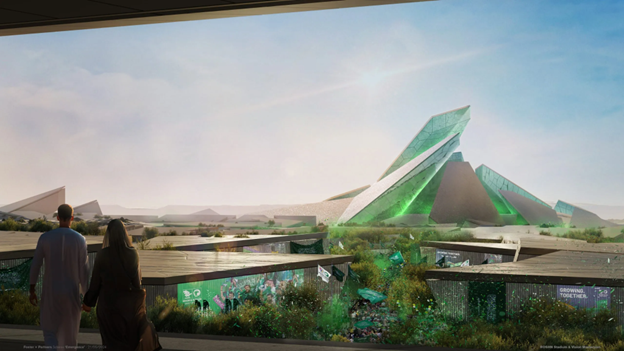
With a focus on sustainability and innovation, ROSHN Stadium will offer a 46,000-seat experience with advanced technology and enhanced spectator amenities.
Prince Faisal bin Fahd Sports City Stadium

A complete redesign will transform this 1971-built venue into a 46,865-capacity stadium. Emphasizing energy efficiency and Salmani architecture, it will be set within a new green park zone.
King Saud University Stadium
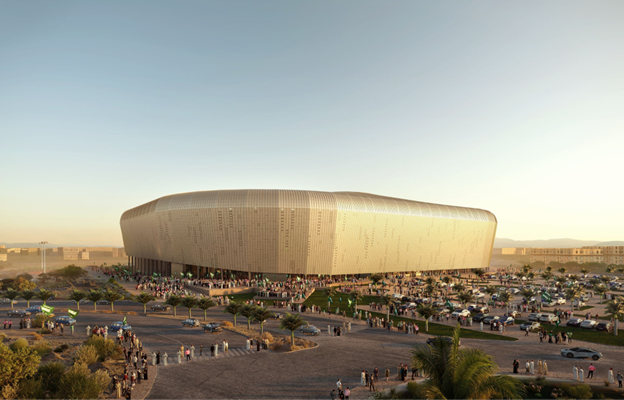
Originally a 25,000-seat venue, this stadium will expand to host over 46,000 spectators. A lightweight elliptical roof design will cap this venue, which will return to university and community use post-World Cup.
South Riyadh Stadium
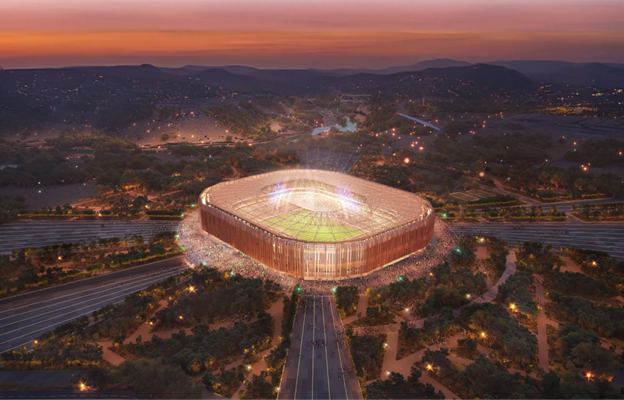
Among the most eco-friendly stadiums in the Kingdom, South Riyadh Stadium is located close to Wadi Namar. With a design influenced by Salmani and eco-friendly features like solar panels and rainwater collection, this stadium can accommodate more than 47,000 spectators. It strikes a balance between old-fashioned reverence for nature and cutting-edge ecological consciousness with its drought-resistant landscaping and site-specific architecture. The stadium is set to become an iconic part of the Saudi Pro League and a thriving community hub after playing host to early-stage World Cup matches.
Jeddah: Coastal Sporting Excellence
King Abdullah Sports City Stadium

Nicknamed “The Shining Jewel”, this iconic stadium will retain its faceted architectural identity while being upgraded to meet FIFA’s highest standards.
Qiddiya Coast Stadium

Representing innovation combined with natural beauty, Qiddiya Coast Stadium will seat more than 46,000 spectators and be located along the picturesque Red Sea shoreline close to Jeddah. The venue’s design, which takes design cues from the nearby coastline, is reminiscent of waves. Group stage and knockout matches will be held at the stadium, which is set to open in 2032. Removable upper tiers and flexible spaces for concerts, esports, and exhibitions will highlight its long-term versatility and entertainment potential as it transforms into a dynamic complex after the World Cup.
Jeddah Central Development Stadium
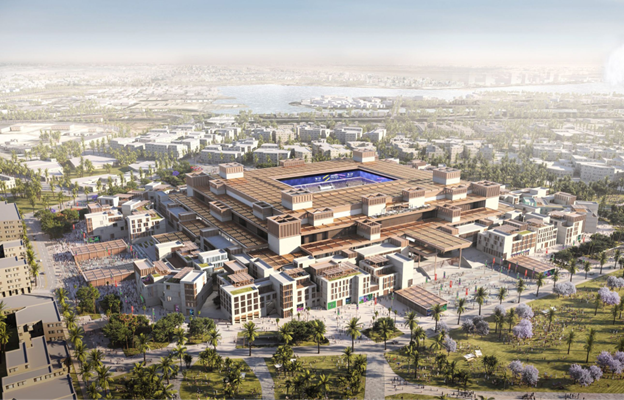
A brand-new stadium with a 45,794 capacity, it will be a central piece in Jeddah’s urban transformation, combining modern flair with traditional design elements.
King Abdullah Economic City Stadium

This 45,700-seat stadium is situated in KAEC, north of Jeddah. The architectural firm AFL drew design inspiration from coral reefs in the Red Sea for its shape. In addition to hotels and retail spaces, the precinct will house sports clinics.
Al Khobar: Eastern Province’s Rising Star
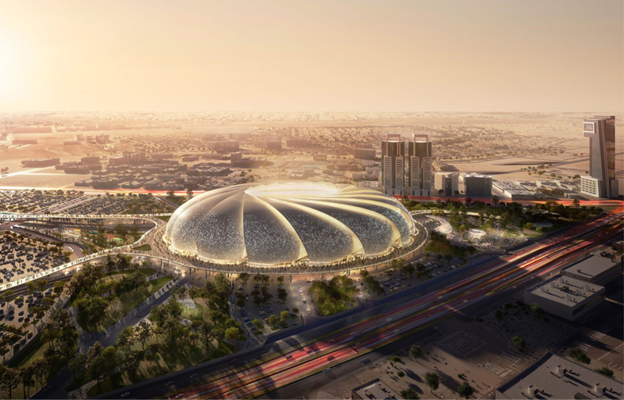
Located in Al Khobar, Aramco Stadium showcases the perfect blend of modern architecture with industrial history. Supported by Saudi Aramco, a global powerhouse in the energy sector, this stadium is being constructed with an anticipated capacity of more than 46,000. With Aramco’s help, the Kingdom is showing that it is serious about improving its sports infrastructure by using its economic might. The stadium’s design echoes Aramco’s tradition of innovation and precision through its emphasis on sustainability, efficiency, and amenities for fans’ comfort. In addition to hosting crucial group and knockout matches during the World Cup, Aramco Stadium, located in the Eastern Province, will also function as a regional sports and entertainment center in the long run.
Abha: The Elevated Experience
Abha Stadium
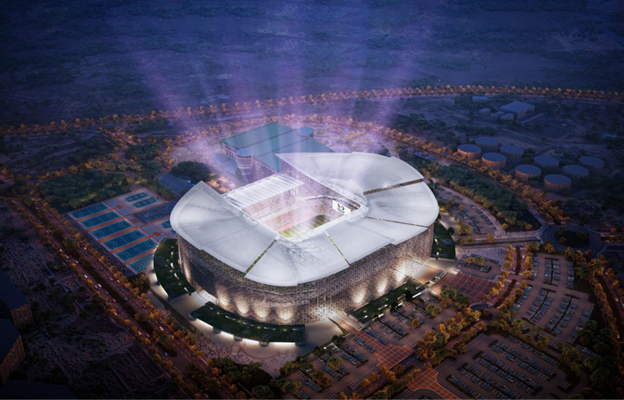
Located in the picturesque Asir Mountains, this 45,428-seat stadium will blend in with its natural surroundings, providing fans with a refreshing atmosphere, panoramic views, and an international football experience like no other.
NEOM: A Stadium of the Future
NEOM Stadium
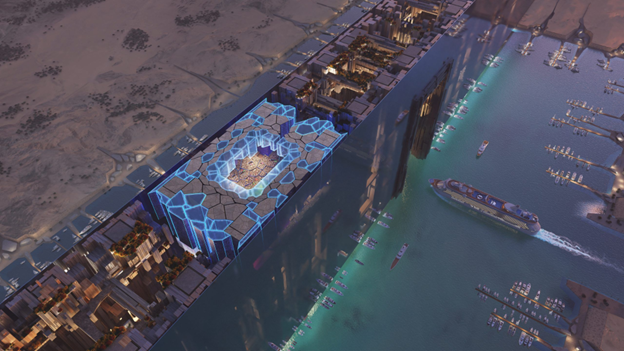
Situated 350 meters above ground inside the revolutionary city of The Line, NEOM Stadium will seat 46,010 spectators. As a symbol of futuristic urbanism, it will incorporate the highest levels of sustainability, smart technology, and architectural ambition.
These stadiums are more than venues; they are monuments to Saudi Arabia’s transformation and cultural pride. Each one tells a story of heritage, innovation, and the Kingdom’s unwavering commitment to hosting a groundbreaking 2034 FIFA World Cup.



